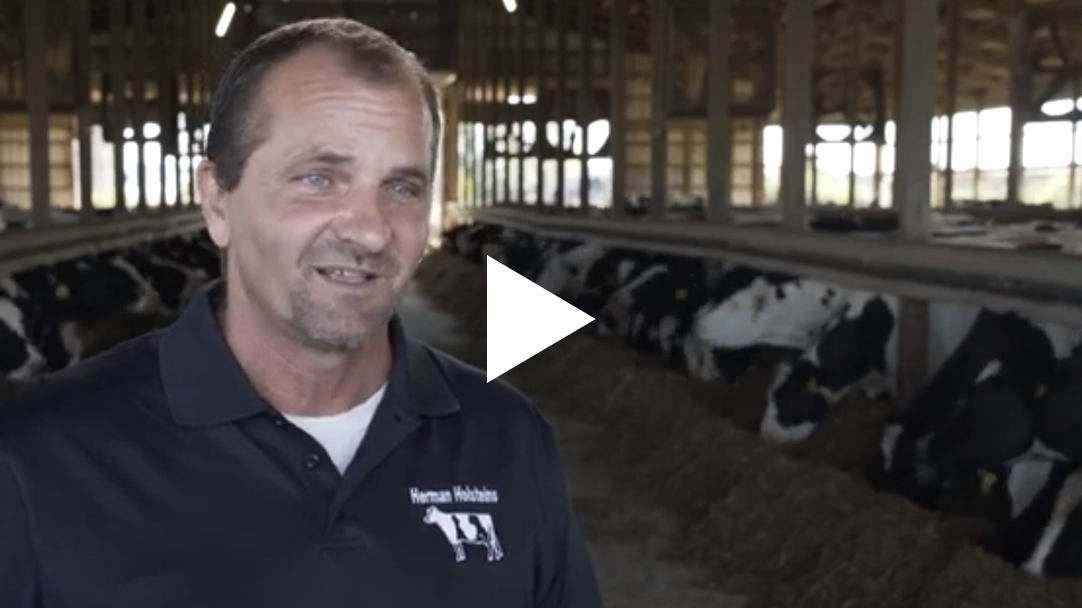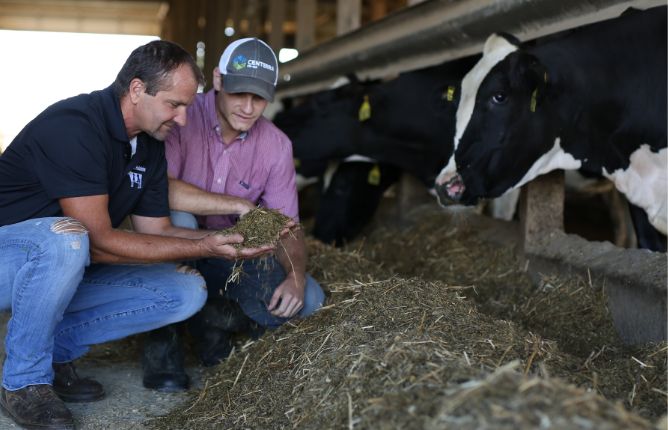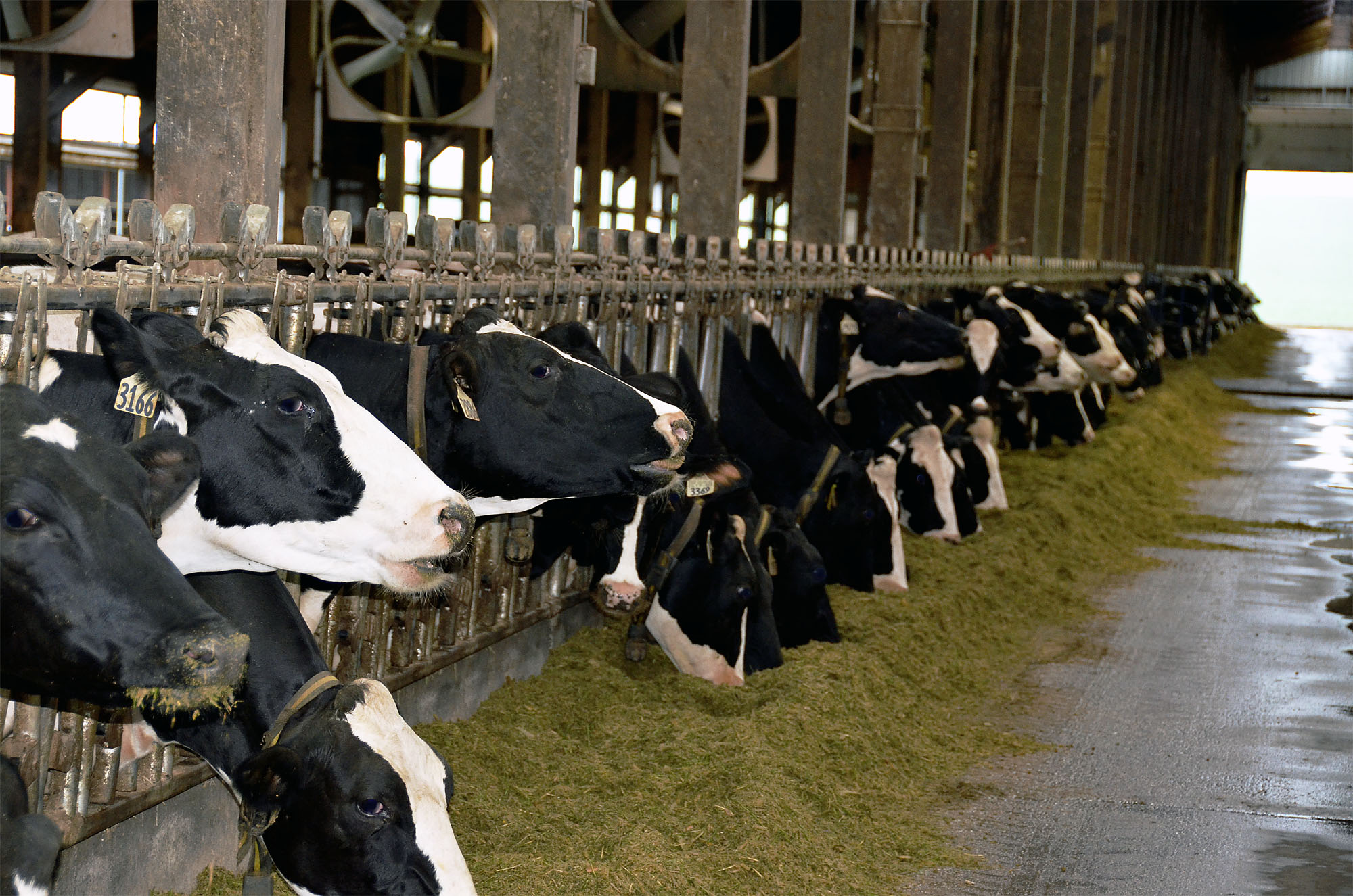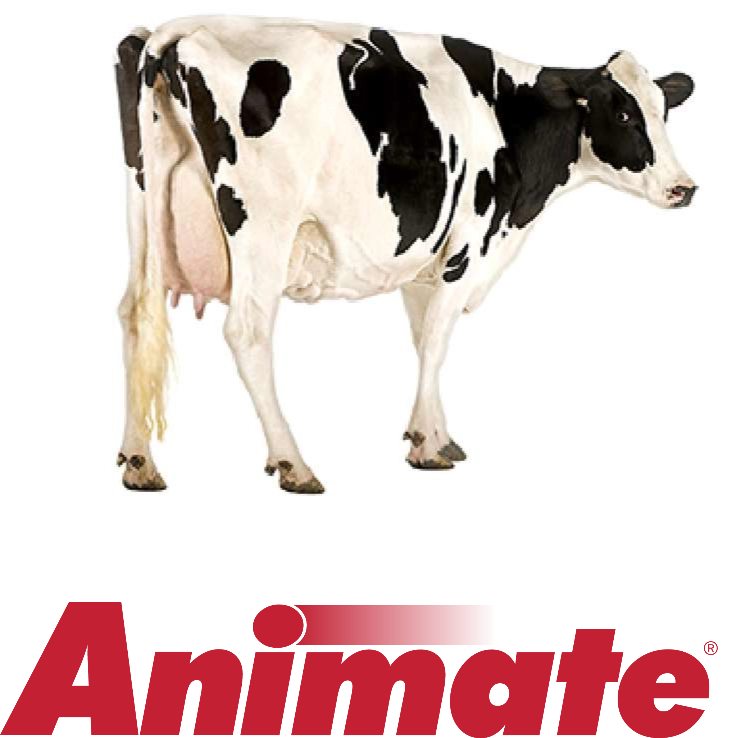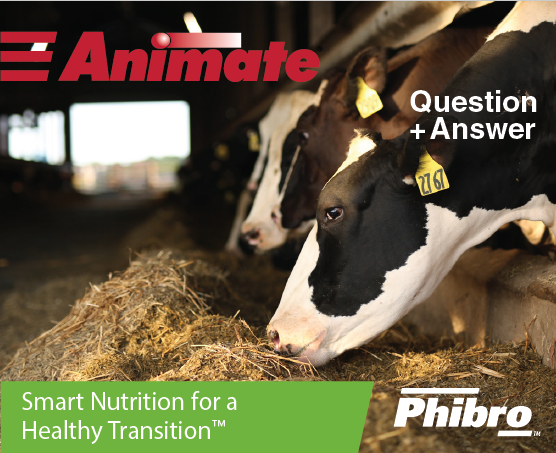
Hypocalcemia
01 What is Milk Fever (MF)? What is subclinical hypocalcemia (SCH)?
Hypocalcemia is a disorder in dairy cows caused by lower than normal blood calcium concentrations. There are two forms of the disorder, clinical and subclinical. Clinical hypocalcemia, more commonly referred to as MF, is defined as a cow having a total blood calcium concentration below 5.5 mg/dl and showing physical signs of the disorder (muscle tremors, drop in body temperature, laterally recumbent). SCH is defined by a total blood calcium concentration ranging from 5.6 to 8.5 mg/dl and showing no physical signs of the disorder.
02 Why worry about SCH?
Cows affected by SCH are less productive and less profitable, with an estimated cost to dairymen of approximately $125.00 per case. (Oetzel, G.R. 2012. Proc. Four-State Dairy Nutrition & Mgmt. Conf.) Since more cows are affected by SCH (> 50%) than MF (typically, < 5%), SCH has a larger negative impact on dairy profitability.
03 How do I determine the incidence of SCH in my herd?
The incidence of SCH in a herd can be determined by measuring blood calcium concentrations between 48 and 72 hours following calving. Before doing so, it is necessary to establish a threshold level of blood calcium concentration that is considered “normal”. It is generally accepted that a value above 8.5 mg/dl is normal.
Negative Dietary Cation-Anion Difference (DCAD) Diets
04 What does DCAD mean?
DCAD stands for “Dietary Cation-Anion Difference”. It is a measure of the milliequivalent difference between positively charged minerals, or cations (predominantly potassium and sodium), in relation to the negatively charged minerals, or anions (predominantly chloride and sulfur), in a ration. DCAD is calculated using the molecular weight and charge of these four minerals. DCAD (mEq/100 g) = (% Na/.023 + % K/.039) – (% Cl/.035 + % S/.016)
05 Why feed a negative DCAD diet?
Regardless of age, all prepartum dairy cows are susceptible to hypocalcemia due to the rapid increase in calcium requirements around calving. Cows that are hypocalcemic have increased risk of developing retained placenta, metritis, mastitis and displaced abomasum, which can lead to reduced milk yields and decreased fertility. Feeding a negative DCAD diet to cows prior to calving helps reduce the risk of developing hypocalcemia.
06 How long do I need to feed a negative DCAD diet for it to be effective?
To achieve the most benefit from feeding a negative DCAD diet, cows should be fed the diet a minimum of 21 days prior to calving.
07 Is it safe to feed a negative DCAD diet for longer than 21 days prepartum?
Yes. Studies have documented the safety and effectiveness of feeding a negative DCAD diet for up to 45 days prepartum, ideal for one-group dry cow programs.
08 How do negative DCAD diets work to reduce hypocalcemia?
Negative DCAD diets work by causing a moderate, compensated metabolic acidosis and aciduria. This is accomplished by feeding elevated levels of anionic minerals containing chloride and/or sulfur. The compensated metabolic acidosis lowers blood pH, but still within normal ranges, and through the actions of parathyroid hormone and vitamin D, enhances the cows’ natural physiological mechanisms for maintaining normal blood calcium concentrations. These include dietary calcium uptake by the gut and bone release of stored calcium. In addition, aciduria induces urinary calcium excretion. Combined, these three actions working together increases the flux of calcium through the exchangeable calcium pool.
09 What effect on health events can I expect after feeding a properly formulated negative DCAD ration?
Calcium is a critical mineral involved in many biological functions including muscle contractions, nerve conduction and immune cell function. Feeding a properly balanced negative DCAD diet can result in reductions in clinical and subclinical hypocalcemia, displaced abomasum, retained placenta and metritis.
Why Feed Animate®?
10 What is Animate?
Animate nutritional specialty product is a thoroughly researched and field tested anionic mineral proven to help reduce the incidence of hypocalcemia which can have negative effects on health, production and fertility. Because it is highly palatable, Animate can be fed in a fully acidified program without significantly decreasing dry matter intake (Leno et al., 2017 J. Dairy Sci. 100; 4604) , an important consideration when choosing an anionic mineral product.
11 What makes Animate different from other anionic products/salts?
The proprietary manufacturing process used to make Animate incorporates mineral salts into a carrier matrix, making Animate highly concentrated and palatable. Best Practice for Animate
12 How much Animate do I need to feed?
The amount of Animate to feed will vary between farms but will always be the amount needed to result in a urine pH range from 5.5 to 6.0. This is typically from 1.20 to 1.50 lb (.55 to .70 kg) per day.
13 Why do I feed extra calcium with a fully acidogenic Animate diet?
Research has demonstrated that feeding high levels of dietary calcium (> 180 g per head per day) results in greater amounts of available calcium (Amundson et al., 2018. J. Anim. Sci. 96:5010), and greater pregnancy rates at first timed AI (Ryan et al., 2020. Theiogen. 142:338) compared to feeding a similar DCAD diet with low dietary calcium.
AN030920GLB ©2021 Phibro Animal Health Corporation. Phibro, Phibro logo design, Healthy Animals. Healthy Food. Healthy World. Smart Nutrition for a Healthy Transition and Animate are trademarks owned by Phibro Animal Health Corporation or its affiliates.
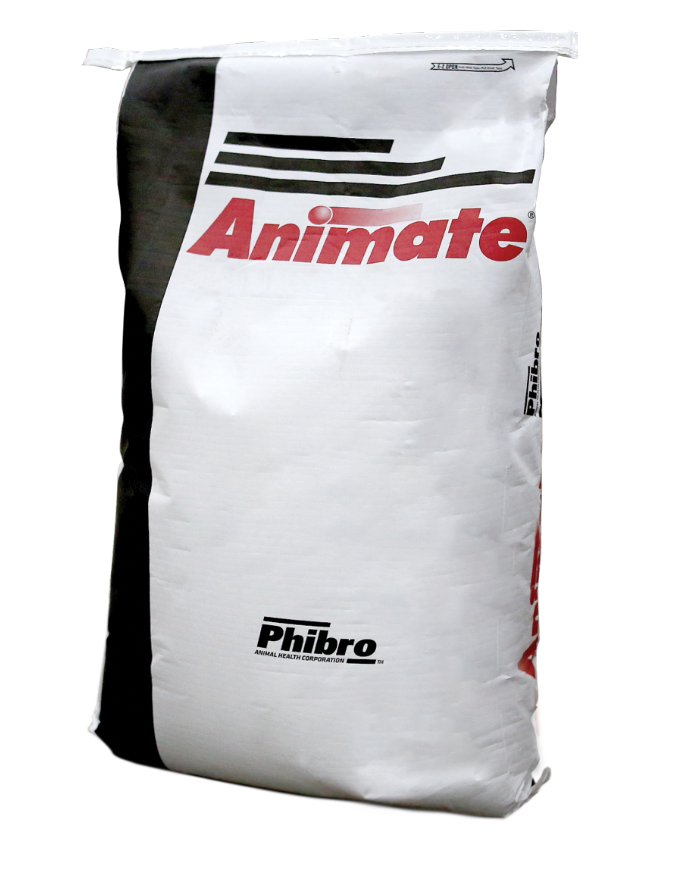
Start with the Right Anion Source
Animate® nutritional specialty product is a unique and patented anionic mineral that has been shown to help keep transition cows healthy and productive.
Learn about Animate







